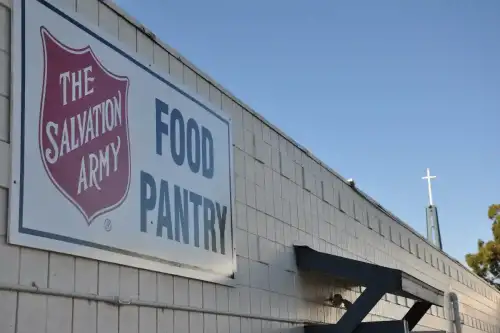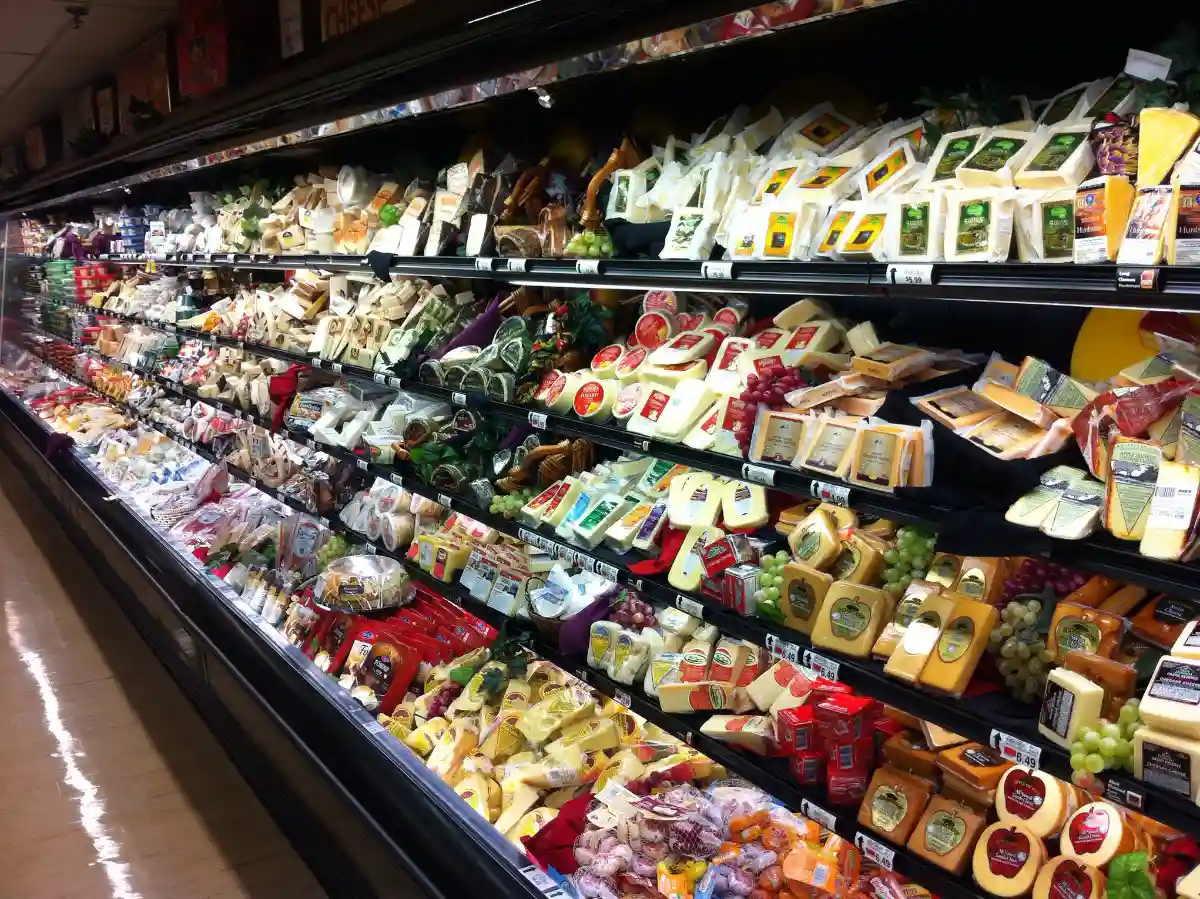Celiac.com 11/13/2025 - In many communities, food assistance programs do their best to stretch limited resources, yet people who must avoid gluten often leave with bags they cannot safely eat. For anyone living with celiac disease or medically necessary gluten avoidance, “making do” is not an option; even small amounts of gluten can trigger symptoms and long-term intestinal injury. Over the summer, a congregation in Nova Scotia piloted a simple idea with big consequences: build a food share that centers people who need gluten-free food. The initiative operates under The Salvation Army’s Encounter Church, serving residents in Sackville, Bedford, and Dartmouth, and it is organized like a small market where guests choose items that meet their health needs rather than accepting a generic box.
How the Pilot Works
The Gluten-Free Food Share runs twice per month and functions much like a compact grocery experience. Guests book a time slot, arrive during that window, and select from clearly labeled gluten-free staples and extras. The project grew out of conversations with local partners who reported that standard donations rarely included gluten-free choices. With support from Food Banks Canada and hands-on coordination by the church’s community ministries team, volunteers now stock, sort, and guide guests through the shelves, answering questions about ingredients and preventing accidental cross-contact.
Early Results: From a Handful to a Steady Stream
Celiac.com Sponsor (A12):
In the opening weeks, only a few households came through the doors. Word of mouth changed that quickly. Within another cycle, attendance nearly tripled, and participation has continued to rise as neighbors share their experiences. Guests have been surprised by two things: the ability to select foods they will actually use, and the quantity of safe items available at one time. For families managing tight budgets, the difference between one or two costly gluten-free products and a thoughtfully chosen basket is the difference between scraping by and planning real meals for the week.
What This Means for People with Celiac Disease or Gluten Sensitivity
A gluten-free diet is not a lifestyle preference for people with celiac disease; it is the only effective treatment. That reality collides with two practical barriers: gluten-free products are expensive, and many donated foods contain wheat, barley, or rye. A program that removes both obstacles at once—cost and availability—does more than fill a pantry. It reduces the daily stress of reading labels in a hurry, lowers the risk of accidental exposure, and restores a sense of autonomy. Guests who can choose their own items are not forced into unsafe substitutions or skipped meals; they can plan breakfasts, school lunches, and dinners with confidence. For those with non-celiac gluten sensitivity, reliable access to safe foods can also mean fewer symptoms, more consistent energy, and less time lost to recovery.
Design Choices That Make the Program Work
Several structural features explain the strong early response. First, the shopping model respects dignity and reduces waste; guests pick only what they will eat. Second, clear labeling and trained volunteers simplify an otherwise complicated process of checking ingredients and identifying hidden sources of gluten. Third, the appointment system keeps the experience calm and predictable for families juggling work, transit, or childcare. Finally, by running on a regular schedule, the program becomes part of a household’s planning routine rather than a one-off event.
Real-World Impact Beyond the Pantry
The program addresses burdens that extend far beyond food itself. People living on reduced income, on parental leave, or between jobs face painful tradeoffs, and gluten-free products are often the first to be cut because of their price. A predictable source of safe staples helps stabilize monthly budgets at a time when the costs of groceries and transportation continue to rise. It also helps with health equity: consistent access to the correct diet decreases urgent care visits triggered by accidental gluten exposure and helps families stay closer to work and school schedules.
Costs, Constraints, and the Path to Sustainability
Running a specialized food share is more complex than stocking a few shelves. Gluten-free products tend to be expensive, storage needs can be different, and demand may fluctuate as new guests learn about the service. There are staffing realities as well: items need to be sorted, dates checked, and donations screened to prevent cross-contact. To sustain the work after the pilot phase, the organizers will need predictable funding, cold and dry storage, and a volunteer base that can handle the twice-monthly rhythm. Local donors can help by giving clearly marked gluten-free items, gift cards to grocers that carry certified products, or funds dedicated to staples like pasta, baking mixes, oats labeled gluten-free, and crackers. Restaurants and bakeries with certified gluten-free lines can contribute overproduction or short-dated items. Community groups can sponsor a “gluten-free shop day,” covering the costs for a single distribution.
Why a Separate Gluten-Free Track Is Not Redundant
Some may wonder whether mainstream food banks could simply add more gluten-free items to general shelves. In practice, a dedicated track solves persistent problems. It keeps safe foods away from open wheat products, reduces mix-ups during busy hours, and allows staff to master a narrower, deeper set of knowledge about labeling and certification. It also signals to the community that people with celiac disease are expected and welcome—not an afterthought. That message matters. When people feel seen, they are more likely to seek help early rather than waiting until a crisis.
Lessons for Other Communities in Canada
The Halifax-area pilot shows that a focused solution can scale quickly when it meets a real need. The model is adaptable: small towns might host a monthly pop-up at a community center; larger cities might operate weekly hours or add a gluten-free section within an existing food hub. Partnerships are key. Health clinics can refer patients newly diagnosed with celiac disease. Schools can flag families wrestling with dietary needs during the school year. Faith communities and neighborhood associations can organize item-specific drives to keep shelves stocked with high-demand products that are often too costly for families to buy on their own.
How Donors and Volunteers Can Help
Well-intentioned donations sometimes miss the mark. Programs like this one benefit most from items that are clearly labeled gluten-free and from products less likely to be cross-contaminated in production. Shelf-stable pasta, rice mixes labeled gluten-free, crackers, oats certified gluten-free, baking mixes, canned soups that are gluten-free, and snacks safe for school are steady favorites. Financial gifts stretch even further because coordinators can purchase exactly what is missing that week. Volunteers who enjoy logistics can help with inventory and labeling; those who love hospitality can greet guests, explain the system, and answer ingredient questions. Each of these tasks directly reduces the cognitive load on families with medical diets.
Practical Advice for Guests with Celiac Disease
To make the most of a shopping appointment, guests can bring a short list of household favorites and meal plans. That helps prioritize scarce items and avoid impulse choices that are not useful at home. Asking volunteers about storage tips can extend the life of pricier products. For example, bread labeled gluten-free often freezes well; baking mixes can be divided and stored in airtight containers; and certified oats can become breakfast, granola, or meatloaf binder. If a household manages multiple needs—such as dairy avoidance alongside gluten-free—speaking with staff in advance can help identify alternatives stocked that week.
Beyond the Pilot: A Vision of Food Security That Includes Everyone
The early momentum in Nova Scotia hints at a bigger possibility. When food support is designed for people with the strictest dietary requirements, it tends to work better for everyone. Clear labels, orderly shelves, and a predictable schedule reduce stress for all guests. A dignified, choice-based approach lowers waste and increases satisfaction. Most important, it reframes assistance as a partnership rather than a transaction. That shift builds trust, which will be crucial if the program seeks long-term funding or replication in other provinces.
Implications for Health Systems and Policy
Celiac disease is common enough that every region will have families who need strict gluten avoidance. When those families cannot afford safe food, medical complications and missed workdays follow. Programs like this one sit at the intersection of health and social care. They demonstrate how modest, targeted investments can prevent expensive downstream costs, from repeated clinic visits to nutritional deficiencies. Policymakers and funders who track outcomes may find that supporting dedicated gluten-free food shares reduces avoidable healthcare use while lifting household resilience.
Conclusion: Meeting a Specific Need, Restoring Choice
The Gluten-Free Food Share launched by Encounter Church is a small program with outsized impact. By centering people who must avoid gluten, it turns food assistance into a safe, predictable, and respectful experience. For those with celiac disease or gluten sensitivity, it means fewer painful tradeoffs and more meals that support healing. For the wider community, it offers a practical blueprint: listen to guests, organize around their real constraints, and invite local partners to keep the shelves full. If this pilot’s early trajectory continues, it will not only endure past its first season—it will inspire similar efforts across Canada.
Read more at: salvationarmy.ca









Recommended Comments
There are no comments to display.
Create an account or sign in to comment
You need to be a member in order to leave a comment
Create an account
Sign up for a new account in our community. It's easy!
Register a new accountSign in
Already have an account? Sign in here.
Sign In Now